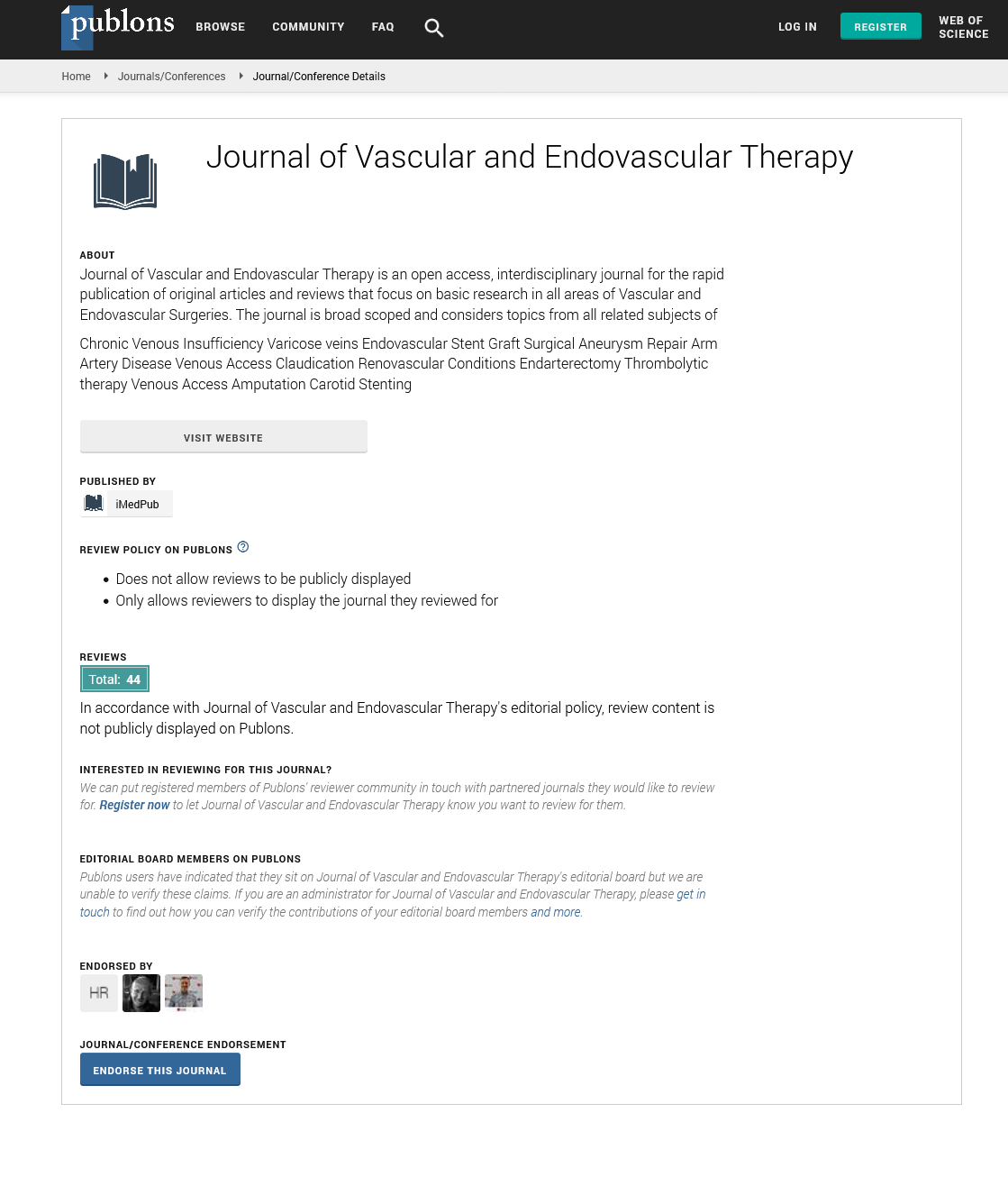Abstract
The Foot Angiosomes as Integrated Level of Lower Limb Arterial Perfusion: Amendments for Chronic Limb Threatening Ischemia Presentations
Introduction: The angiosome concept was initially pioneered by Taylor and Palmer in the plastic reconstructive surgery field. The authors described a reproducible model of arterial and venous distribution in humans that follows specific three-dimensional (3D) networks of tissue. The angiosome model yet represents a specific level among other staged and graduated levels of harmonious arterial irrigation in the lower extremity. Specific CLTI pathologies enhance characteristic arterial branches affectation, including the angiosomal source arteries. Evaluating main atherosclerotic lesions at peculiar Levels of arterial division may afford useful clinical information.
Method: The present study proposes a description of six levels of degressive arterial division and collateral distribution in the inferior limb, including the angiosomal stage. Following succeeding perioperative 2D angiographic observations over an eight-year period, these levels (I to VI) were analyzed (including the angiosomal Level III) and summarized in attached tables. The medical files of 323 limb-threatening ischemic foot wounds (Rutherford 4-6) in 295 patients (71% men) were retrospectively reviewed. All arterial patterns were defined by preoperative Angio-CT, or Angio-MRI, associating in each case perioperative angiography. For each anatomical Level the worse atherosclerotic lesions (TASC II) were located, then compared with adjacent levels in same individual CLTI patterns. For each ramification stage the heaviest occlusive angiographic lesions (TASC “C-D”) were selected and defined as “dominant”, in comparison with parallel “associate” atherosclerotic locations. A comparison between 196 diabetic, against 127 non-diabetic CLTI patterns of atherosclerotic occlusive disease was performed.
Results: Notable differences in the distribution of the dominant occlusive lesions were observed among the two Groups. Specific “Level I” iliac and common femoral lesions (10%), adding “Level II” superficial femoral (17%) also “Level II” femoro-popliteal (32%) dominant occlusive lesions in non-diabetics prevailed against correspondent iliac (3%), superficial femoral (7%), and femoro-popliteal (21%) occlusive lesions in diabetic CLTI subjects.
Conversely, “Level II” distal popliteal and tibial occlusions (33%), “Level III” pedal and angiosomal branches (34%) adding “Level III” dominant foot arches occlusions (5%) in diabetic patients, overruled correspondent popliteo-tibial (30%), pedal-angiosomal (5%), and isolated foot arches (0%) lesions in non-diabetics.
Conclusion: Inferior limb vasculature affords a harmonious 3D distribution of “tissueoriented” arterial axes including the angiosomal source arteries. These branches are coupled to a vast collateral compensatory system (choke-vessels, cutaneous perforators, and arterial-arterial interconnections) in a degressive array. Six Levels of arterial ramification (I-VI) can be described on angiographic analysis. To specific Levels I-II bear atherosclerotic occlusive disease location, characteristic Levels III-IV topographic occlusive disease is opposed in diabetic CLTI patients.
Author(s):
Alexandrescu VA, Pottier M, Balthazar S and Azdad K
Abstract | Full-Text | PDF
Share this

Google scholar citation report
Citations : 177
Journal of Vascular and Endovascular Therapy received 177 citations as per google scholar report
Journal of Vascular and Endovascular Therapy peer review process verified at publons
Abstracted/Indexed in
- Google Scholar
- Open J Gate
- Publons
- Geneva Foundation for Medical Education and Research
- Secret Search Engine Labs
Open Access Journals
- Aquaculture & Veterinary Science
- Chemistry & Chemical Sciences
- Clinical Sciences
- Engineering
- General Science
- Genetics & Molecular Biology
- Health Care & Nursing
- Immunology & Microbiology
- Materials Science
- Mathematics & Physics
- Medical Sciences
- Neurology & Psychiatry
- Oncology & Cancer Science
- Pharmaceutical Sciences


